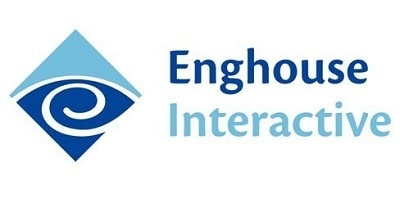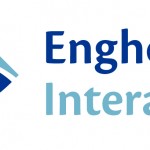Switching up the contact centre business model from cost centre to revenue driver
Steve Nattress, Product Director, Enghouse Interactive
 Over the years, the contact centre has often been seen as a necessary but costly function of the business, generating multiple expenses: from agent salaries to maintenance fees and offering limited financial value in return.
Over the years, the contact centre has often been seen as a necessary but costly function of the business, generating multiple expenses: from agent salaries to maintenance fees and offering limited financial value in return.
This perception is changing as new capabilities come into play through which organisations can more easily measure the value of the contact centre. The issue historically has been that there was little to no ability to associate new revenue with what the customer service team was doing.
Most customer-facing operations were split into sales and support teams with the former seen as generating the revenue, and the latter providing necessary help to customers. The support team was not perceived to be offering any additional value to the organisation, mainly because there was no real way to link it with a specific sales number.
More recently, the importance of good customer service has become more widely recognised as study after study demonstrates the value it can bring. Bain and Company, for example, found that companies that excel at customer experience grow revenues 4-8% above their market. Other studies have shown how retaining customers helps to drive profits.
Traditionally, the benefit of better customer engagement was seen to be around the way it helped organisations to drive down cost. Studies indicate that retaining existing customers is far less expensive than acquiring new ones. We have seen research that shows the cost of retaining an existing customer may be up to 25 times less expensive than gaining a new one. So businesses can benefit hugely from focusing on customer retention and driving up customer lifetime value.
But what kind of tools are available to them? Structured data and its analysis is often the starting point. Over the past five years, it has become easier to extract data from the contact centre showing in the case of net promoter scores (NPS), what the customer thinks of the business.
The problem is, and where next-generation voice of the customer tools can help, is people are about more than just their historical numbers. Organisations also need intelligence about how their customers are thinking and feeling. Rather than just collecting the traditional NPS score, they need to find out why customers gave that score. Being able to identify that enables them to create an action plan to improve customer service still further. Customers that simply give a score of six out of ten for delivery, for example, could suggest a negative opinion but that alone does not give the business tangible information about the reasons behind the result.
That’s where the next generation of voice of the customer tools can help by providing an extra level of precision that tells them why the customer was negative about delivery. It could be that items always turned up late or the delivery was missing an element. Getting access to that level of precision enables the business to address the problem.
Having access to information about what is causing poor customer service should allow the business to make the necessary changes to improve. That, in turn, should help them to drive up revenues. But the focus should not just be on the negative side of the equation. It is also about telling agents what they have done well and being precise about it. Feedback that simply indicates that we have had very positive comments about a member of staff is nice to hear but it is not actionable insight. A comment that says: “we really liked how friendly your staff were”, however, is insight the business can act on by focusing on specific ways to ensure this is incorporated into training, for example, and therefore improved still further.
How can this insight best be captured though? Again, voice of the customer tools can help here because of their language analysis capabilities. They understand the concept of a human sentence, the different elements from subject to verb to object that need to come together, and the importance of context.
By analysing language, it is possible to spot attrition risks: phrases like, “I have had to call or email twice to get this result” or “I’ve had to wait for ages and nobody contacted me”. These customer effort indicators can be analysed by the business to trigger appropriate customer service responses.
Beyond that, organisations can start tailoring marketing campaigns based on the way people talk to them and segment their customers based on how they interact and what their pain points were. This type of point-of-service marketing is another example of how analysing customer insights allows organisations to generate revenues.
Positive prospects
Looking to the future, we are seeing this kind of voice of the customer technology and associated analytical capability become increasingly available. Doing the analysis is not enough in itself however, organisations also need to share the results with the teams that can use them to take action: from marketing to customer service and sales.
In doing so, they must also work on ways to make it more easily understandable. Today, we see examples where organisations employ teams of computational linguists to teach platforms to understand what is being said in context and present it in a more easily consumable way. All this effectively lowers the barrier to adoption and brings the time when contact centres are widely seen as drivers of revenue closer to fruition.
![]()
 Enghouse Interactive is a subsidiary of Enghouse, a Canadian publicly traded company (TSX:ENGH), which provides enterprise software solutions focusing on remote work, visual computing and communications for next-generation software-defined networks. The Company’s two-pronged growth strategy focuses on internal growth and acquisitions, which, to date, have been funded through operating cash flows. The Company is well capitalized, has nominal long-term debt and is organized around two business segments: the Interactive Management Group and the Asset Management Group.
Enghouse Interactive is a subsidiary of Enghouse, a Canadian publicly traded company (TSX:ENGH), which provides enterprise software solutions focusing on remote work, visual computing and communications for next-generation software-defined networks. The Company’s two-pronged growth strategy focuses on internal growth and acquisitions, which, to date, have been funded through operating cash flows. The Company is well capitalized, has nominal long-term debt and is organized around two business segments: the Interactive Management Group and the Asset Management Group.
For additional information about Enghouse view their Company Profile



